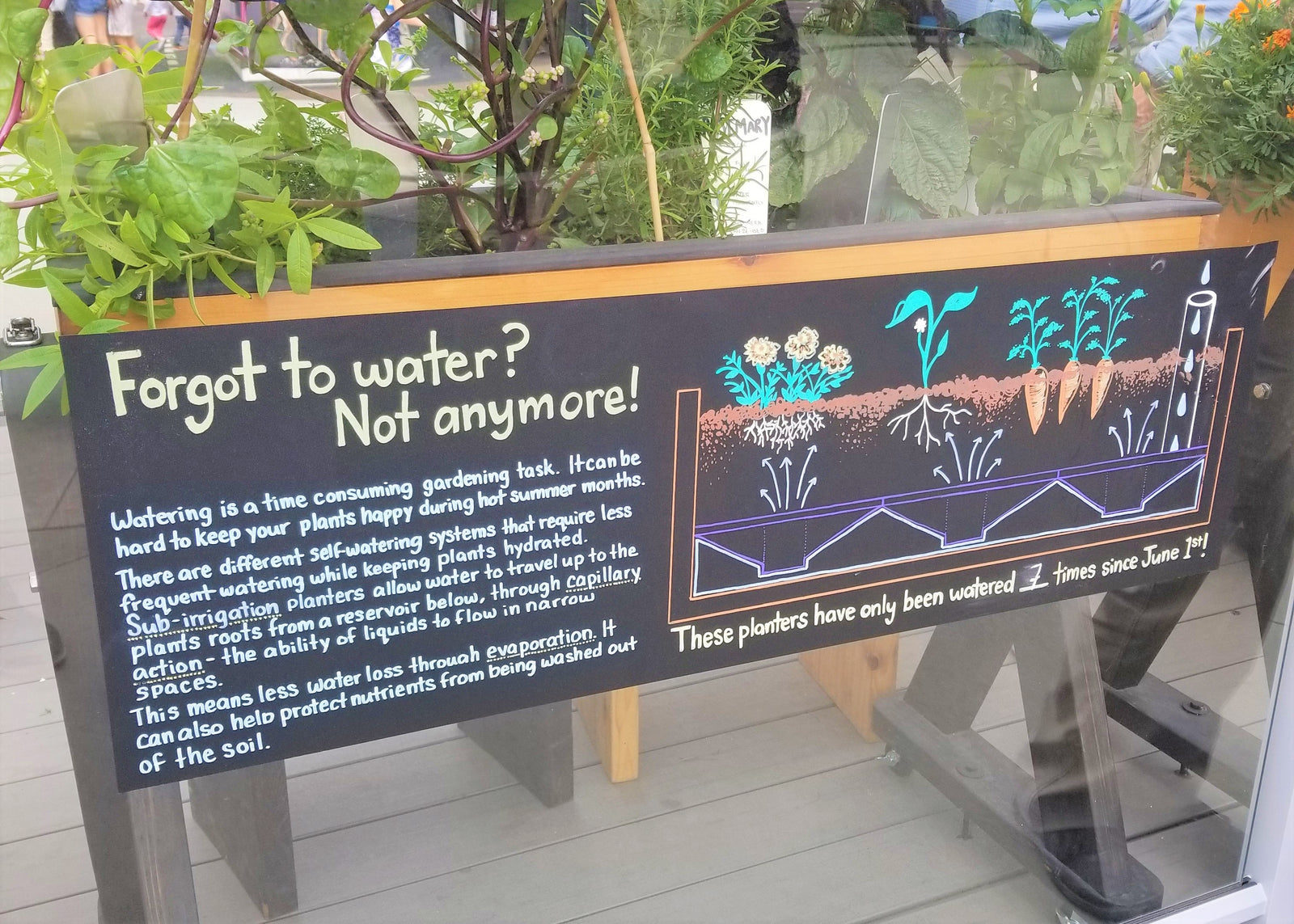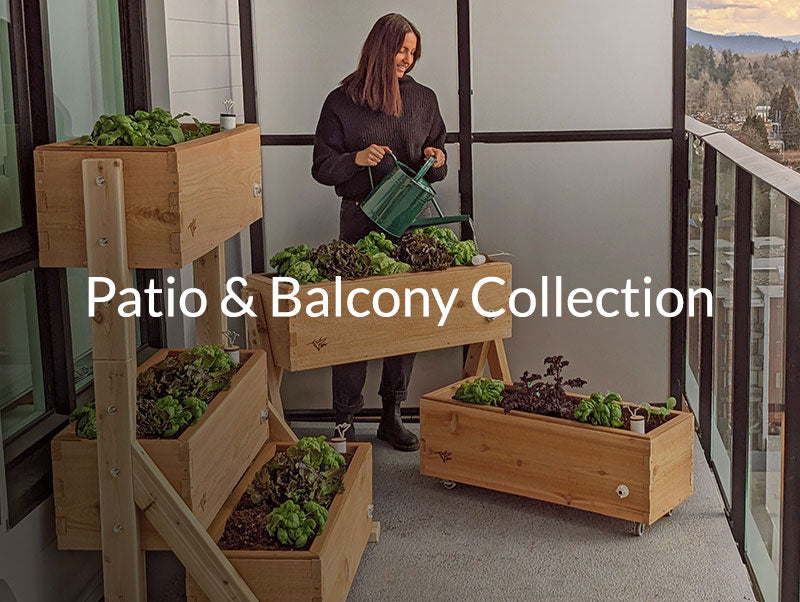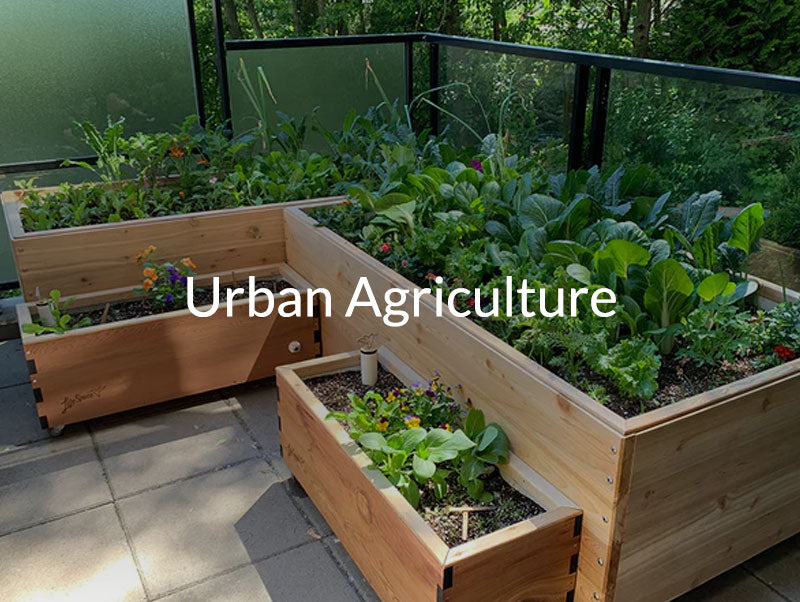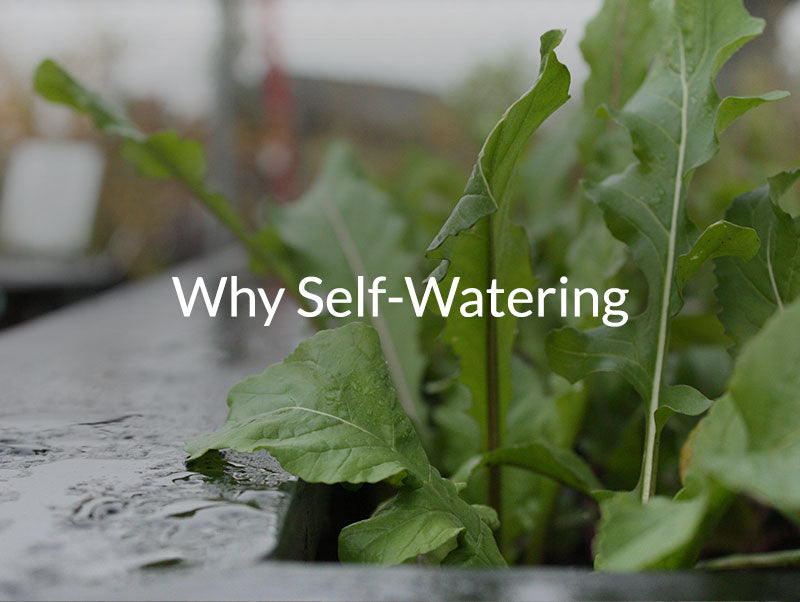Sub-Irrigation | The Advantages of Self-Watering Gardens

Why we build SIP gardens for all our urban garden installations.
Sub-Irrigation may seem like the new kid on the scene when it comes to watering your urban veggie garden, but the technique is as old as it gets. By mimicking the natural water tables found in all the most abundant natural environments, you can unlock a host of advantages that all lead to greater sustainability, reduced maintenance, and veggie garden success.
At LifeSpace we’ve been building wicking beds, or Sub-Irrigated Planters (SIP) as they are professionally known, using the SIP System for over 10 years. We’ve used SIPs to transform almost every type of urban space you can think of: yards, patios, rooftops, school gardens, community gardens, commercial developments, municipal infrastructure… you name it! In this article we’ll go through the main benefits and best uses of SIPs to help demonstrate why you should be thinking about Sub-Irrigation as a solution for all your Urban Gardens.

How does it work?
Soil on top, water underneath, air gap in the middle. By creating a hidden reservoir under the soil and allowing a connection between the two via a “wicking medium” water will be drawn up via capillary action evenly and consistently over time. Just like a sponge. The soil will self-regulate, and if there is water in the reservoir, the plants will always have an even and consistent moisture level… your garden will self-water.

Advantages:
Simplicity
For no other reason than this – SIP gardens are simple. They’re easy to understand, easy to communicate, and very easy to maintain. If you can get in the routine of checking the float gauge once a week and filling up the reservoir when necessary – you will have success. This is much simpler than the guesswork around top watering, or the automation, piping, tubing, and ongoing battles of dealing with drip.
Reduced Maintenance
Up here in Vancouver, the SIP gardens we build require about 8-12 reservoir fills per year. Those reservoir fills are concentrated in July and August, but even when the temperatures really get up there, and the tomatoes and cucumbers are in their fruiting stage… we’re still only filling the reservoirs once a week. This allows our clients the benefit of an easy to follow routine, and the confidence to go away for a vacation or long weekend without worrying about their gardens drying out.
Water Conservation
How common are droughts in your area? Every summer up here in Vancouver we deal with water restrictions – and we live in a rain forest! The beauty of a SIP gardens is that they are incredibly water efficient. Because the water is stored under the soil, it’s protected from evaporation, and always available to the plants as they need it. You no longer have to drastically over water and “water deeply” just to get the water down to the roots… and then watch most of the water run off. You simply fill the reservoir and allow the water to wick up. Also, as a bonus, the reservoir sequesters water and will fill up on its own every time it rains.
Garden Longevity
One of the main drawbacks on building wooden raised beds, is that they rot out over time. Many people opt for a synthetic or metal raised bed for this reason – especially in a commercial setting. Aesthetically speaking I love the look of wood, and metal heats up too much for my liking. But by building a SIP, the first step is lining the inside of your garden with a food safe waterproof liner. This not only creates the membrane for the reservoir, but it completely protects your woodwork from the inside out; and when done properly, almost eliminates the chances of rot. So, the hidden bonus of a SIP garden is you can get the natural beauty of wood, and double or triple its lifespan.
Biophilia
Almost all irrigation techniques that are currently used; from a watering can or a water wand, to sprinklers or drip – are inspired by rain. But rain is inconsistent, and if you look at the most bountiful natural growing environments, it’s not rain that waters the plants.
Think of the Nile River valley. A stripe luscious green surrounded by desert. It isn’t rain that keeps the river valley green, it’s the river water seeping out and under the topsoil to be wicked up by the plants as needed. Or think of the Chinampas, the floating gardens developed by the Aztecs to feed an empire. These gardens can grow independent of rain or top watering because they have a source or water below them that allows water to be drawn up into the soil consistently and evenly over time - creating the ideal growing conditions for plants and veggies to thrive.
SIP gardens are inspired by the same natural principles affectively used for millennia. By reinvigorating the sub-irrigation techniques of perhaps the most ancient urban farmers – we can use SIP gardens to revitalize the cities of today to help people reconnect with their food and how it’s grown.

Best Uses
Anywhere watering – or drainage – is a challenge, or anywhere you want to grow that isn’t directly connected to the earth, you should be using SIPs. Rooftops, Patios, Decks, Balconies etc… are all prime candidates. Or any urban space full of concrete or asphalt that you want to green up and grow some food, SIP gardens are an ideal application.
Also in greenhouses, where temperatures are up, and water consistency is vital – SIPs are perfect.
Really the best use of SIP gardens is any space where maintenance is a challenge, or you want to keep maintenance costs down. If you have a place that you can’t visit often, or if you want a home garden but also want to go away frequently in the summer, a SIP garden is what you’re looking for. The ability to simply fill up the reservoir and walk away for weeks at a time, is a liberating experience!
_____
This video covers a community garden installation by LifeSpace Gardens in partnership with GROWcery and the City of New Westminster BC, Canada. It highlights the benefit and advantages of using the SiP System in urban settings, and showcases the undeniable positive and empowering impact that growing your own food has on individuals and our communities.
____
Conclusion
Water sustainability, maintenance, garden longevity – all these things are important. But in the urban garden game, success is key. If your first year growing food is successful, you’re hooked for life. That’s the real benefit of SIPs – simplified garden success. If you can remember to check the reservoir once a week and fill when necessary, you’ll be harvesting your own food.
Right now we need more urban gardens, and we need more urban farmers!








